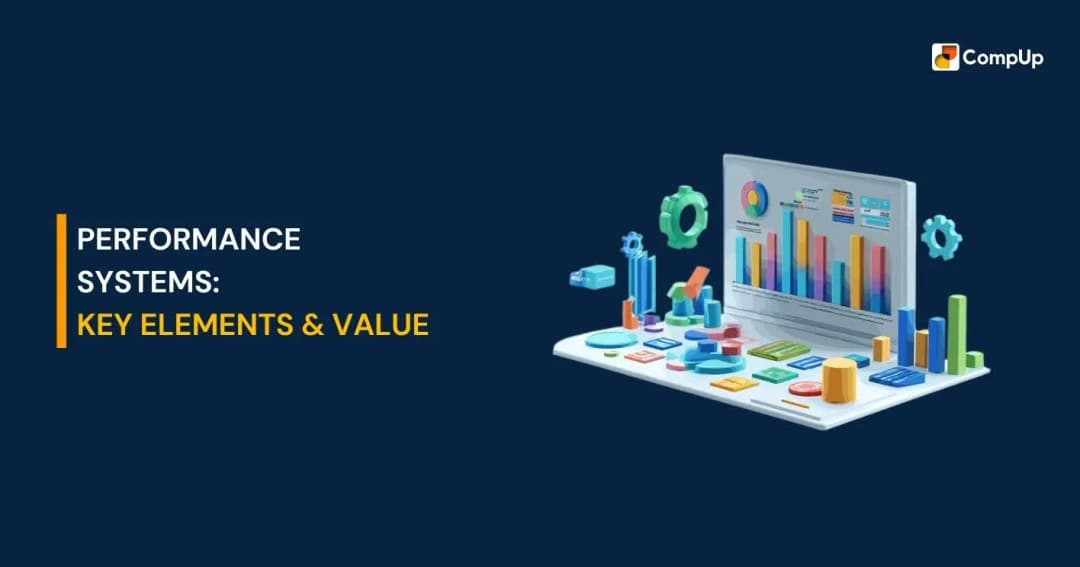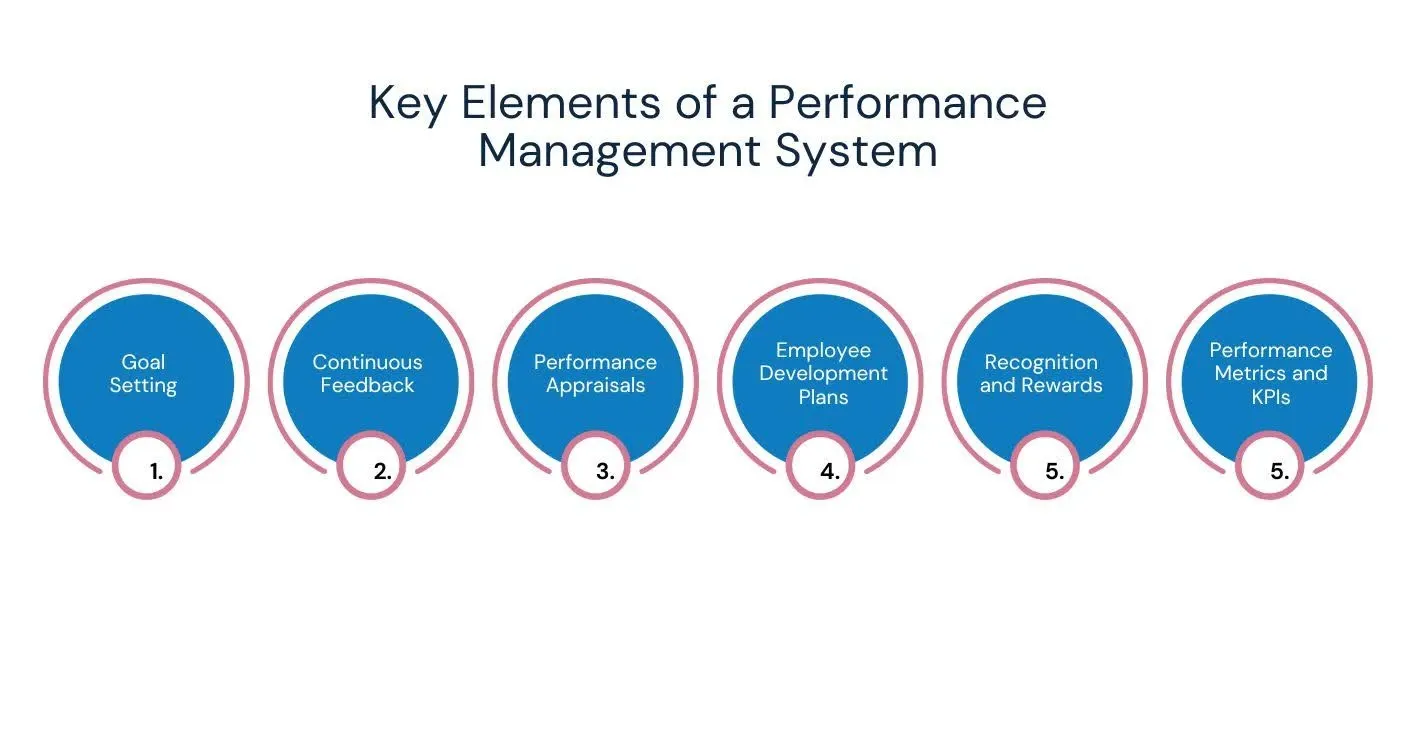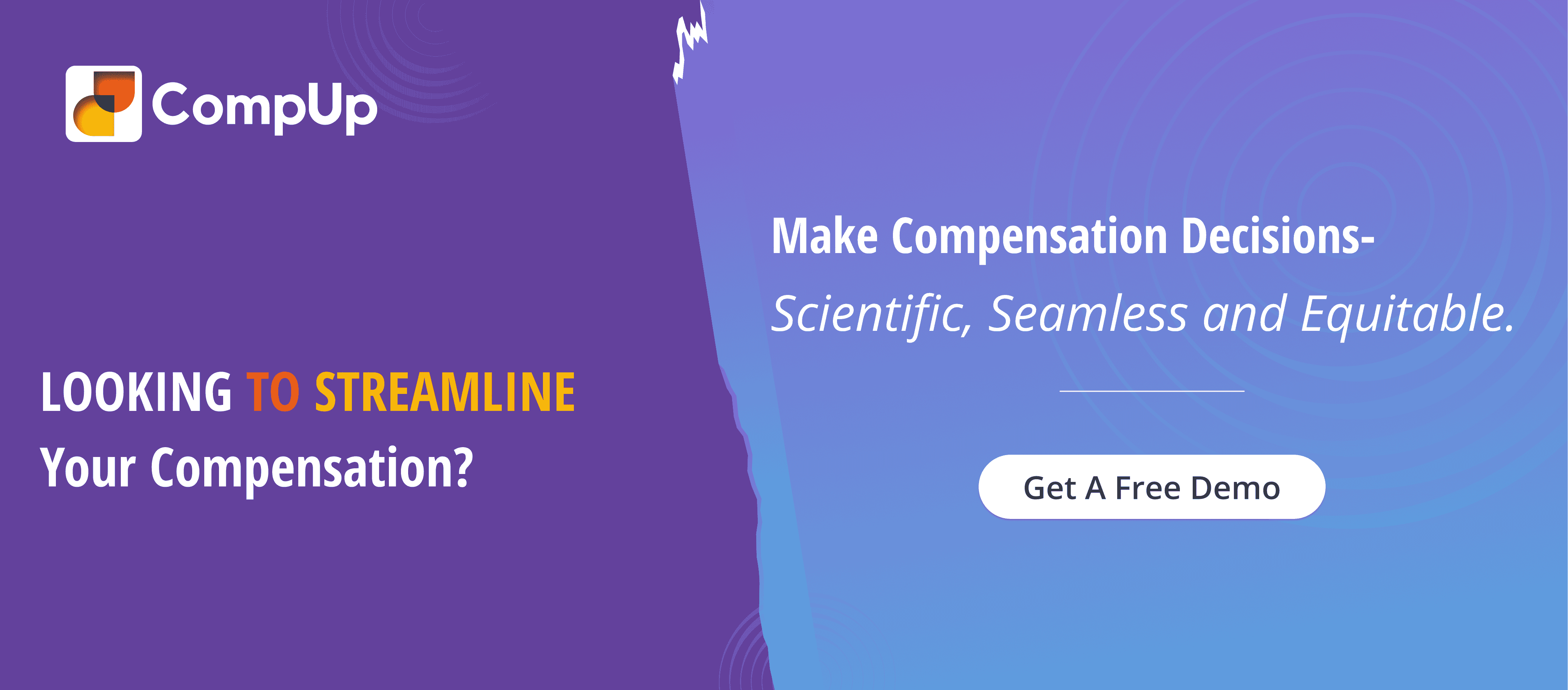
A Performance Management System (PMS) is a strategic approach that organizations use to monitor, evaluate, and enhance employee performance. By aligning individual contributions with company goals, a PMS helps ensure that everyone is working toward shared objectives.
This system goes beyond annual reviews, focusing on continuous feedback, goal setting, and employee development. In today’s competitive landscape, a well-designed PMS not only drives productivity but also fosters employee engagement and growth.
In this blog, we will explore the key elements of a performance management system and the benefits it brings to both employees and organizations.
A Performance Management System (PMS) is a structured process used by organizations to ensure that employees are performing at their best and contributing to the company’s strategic goals.
Unlike traditional performance appraisals that typically occur once a year, PMS is an ongoing process that involves continuous feedback, regular evaluations, and setting clear goals aligned with organizational objectives.
The primary purpose of a PMS is to improve both individual and organizational performance. It helps employees understand their role in achieving the company’s goals, provides regular feedback, and offers opportunities for skill development.
A good PMS focuses not only on performance evaluations but also on employee growth, engagement, and motivation. It integrates goal setting, feedback, training, recognition, and development to foster continuous improvement.
This ongoing process creates a culture of performance, where employees are encouraged to improve and succeed over time.
Suggested Read: Top PayScale Alternatives and Competitors in 2025

A robust Performance Management System (PMS) is composed of several critical elements that work together to align employee performance with organizational goals. Unlike performance appraisal systems, which often focus solely on assessing past performance, a performance management system takes a more holistic approach.
These components ensure that employees are not only meeting expectations but are also engaged, developed, and motivated to contribute to the company’s success.
Setting clear and measurable goals is the foundation of any performance management system. SMART goals (Specific, Measurable, Achievable, Relevant, and Time-bound) help employees understand what is expected of them and provide a roadmap for achieving success.
Actionable Tip: Use goal-setting frameworks like OKRs (Objectives and Key Results) to ensure goals are aligned across all levels of the organization.
Performance management should be an ongoing process, not just an annual event. Continuous feedback, both positive and constructive, helps employees stay on track and make adjustments throughout the year.
Regular feedback fosters open communication, increases employee engagement, and supports the continuous development of skills and capabilities.
Actionable Tip: Use real-time feedback tools to create an environment of open communication, making feedback a daily or weekly occurrence rather than a yearly review.
While performance appraisals are just one part of PMS, they provide a formal review of an employee’s achievements and areas for improvement.
Typically done annually or bi-annually, these evaluations help identify high performers, set new goals, and plan for future development. A well-structured appraisal process incorporates input from both managers and employees.
Actionable Tip: Include 360-degree feedback in performance appraisals to gain a comprehensive view of an employee’s performance from various perspectives.
A strong PMS focuses on employee growth by offering development opportunities. This involves identifying skill gaps, providing training, and offering career development plans to help employees achieve their professional goals.
A focus on development not only improves performance but also increases employee satisfaction and retention.
Actionable Tip: Create individual development plans (IDPs) for employees to outline clear career progression, training opportunities, and goals for personal growth.
Employee recognition is a key motivator for improving performance. Linking performance with recognition and rewards, whether through bonuses, promotions, or simple praise—helps boost morale and job satisfaction.
This ensures that employees feel appreciated for their hard work and encourages them to maintain high performance.
Actionable Tip: Implement a formal recognition program that includes both monetary and non-monetary rewards, ensuring that contributions are celebrated consistently.
Performance metrics and Key Performance Indicators (KPIs) are essential for objectively evaluating employee contributions. KPIs provide measurable standards for success, allowing both employees and managers to track progress toward goals.
These metrics help ensure alignment between individual performance and the organization’s overall objectives.
Actionable Tip: Develop role-specific KPIs that align with the company’s strategic goals, ensuring that every employee’s work directly contributes to the broader mission.
These key elements form the backbone of an effective Performance Management System, ensuring that employees are clear on expectations, continuously improving, and aligned with the organization’s objectives.
By focusing on goal setting, continuous feedback, employee development, and recognition, companies can foster an environment of growth and success. A well-implemented PMS is crucial for driving performance, boosting employee morale, and achieving business goals.
Suggested Read: Modern Compensation Strategy and Best Practices

Suggested Watch: Components of an Effective Performance Management System
A Performance Management System (PMS) is essential for organizations of all sizes and industries, but it becomes particularly critical as businesses grow and workforce complexities increase.
While smaller organizations might get by with informal performance management processes, larger companies require a structured approach to ensure alignment between individual and organizational goals.
Below are the types of organizations that benefit most from implementing a PMS:
As organizations scale, managing employee performance becomes increasingly challenging. With hundreds or thousands of employees, a PMS helps ensure that performance is consistently tracked, goals are aligned, and feedback is provided.
A centralized PMS helps HR and management teams monitor progress, address performance issues, and identify top performers across departments.
For startups experiencing rapid growth, a PMS helps ensure that employees stay engaged, motivated, and aligned with business goals during periods of change.
As startups expand, they need a system that tracks performance, facilitates employee development, and provides structured feedback to support scalability and prevent talent loss.
Organizations with remote or hybrid teams face challenges in monitoring employee performance and maintaining consistent communication. A PMS provides a centralized platform for managing remote teams, offering real-time feedback, tracking performance remotely, and ensuring that remote employees remain connected and engaged with the company’s mission and values.
Companies that prioritize employee growth and development require a PMS to ensure continuous feedback, goal setting, and career progression. A robust PMS helps organizations provide development plans, learning opportunities, and personalized growth paths for employees, fostering loyalty and reducing turnover.
In industries with strict compliance requirements, such as healthcare, finance, and manufacturing, a PMS helps ensure that employee performance and conduct align with industry regulations and standards.
A PMS can track necessary certifications, monitor performance against compliance metrics, and ensure consistent documentation for audits and reporting.
Organizations of all sizes and industries can benefit from implementing a Performance Management System. Whether it’s managing large teams, fostering employee development, supporting remote workforces, or ensuring compliance, PMS provides a structured approach to aligning individual performance with organizational goals.

From the Community: Read this thread for gaining new perspectives on troubleshooting.
While a Performance Management System offers significant advantages, its implementation can present several challenges. Businesses need to be prepared to address these hurdles to ensure the successful adoption of the system and to fully realize its benefits.
Below are some of the key challenges organizations face when implementing a PMS:
Employees and managers may be resistant to adopting a new PMS, especially if they are accustomed to old ways of doing things. This resistance can stem from fear of increased scrutiny, unfamiliar technology, or simply the discomfort of change.
Solution: To overcome resistance, communicate the benefits of the PMS clearly, provide adequate training, and involve employees in the implementation process. Making the transition gradual and offering continuous support will help ease resistance.
Managers play a crucial role in the success of a PMS. If managers do not fully support or understand the system, it can lead to poor implementation. They may fail to provide consistent feedback or set clear goals for employees.
Solution: Engage managers early in the process, offer proper training, and ensure they understand the importance of their role in the PMS. Provide leadership resources and ongoing coaching to help managers effectively utilize the system.
A PMS that is not integrated with other HR and business systems, such as payroll, talent management, and learning management systems, can result in fragmented data and inefficiencies. This lack of integration can also lead to manual work and errors.
Solution: Ensure that the PMS integrates seamlessly with your existing systems, creating a unified platform. Look for solutions that offer compatibility with current software and can streamline processes across different HR functions.
Suggested Read: Understanding Massachusetts Pay Transparency Law and Wage Equity Legislation
A PMS relies on data to track performance, but many organizations struggle to collect accurate and meaningful data. Without clear and relevant performance metrics, it’s difficult to evaluate progress or make informed decisions about employee development.
Solution: Establish clear KPIs (Key Performance Indicators) and other measurable metrics for evaluating performance. Use SMART goals (Specific, Measurable, Achievable, Relevant, Time-bound) to ensure that both managers and employees are aligned in expectations.
One of the primary goals of a PMS is to provide continuous feedback, but inconsistent or infrequent feedback can undermine the system’s effectiveness. Employees may not receive the guidance they need to improve or may not be recognized for their contributions.
Solution: Encourage a culture of regular feedback and check-ins, ensuring that it becomes an ongoing process rather than an annual event. Implement tools that allow for real-time feedback and provide managers with templates or prompts to guide conversations.
Employees may not engage with the PMS if they do not see its value or if the system feels disconnected from their daily work. A lack of engagement can lead to missed opportunities for development and low morale.
Solution: Ensure that the PMS is user-friendly, accessible, and provides clear benefits for employees. Include features like self-assessments, personalized development plans, and recognition to keep employees engaged and motivated to use the system effectively.
While implementing a Performance Management System comes with challenges, these obstacles can be overcome with careful planning, clear communication, and consistent support. By addressing resistance to change, ensuring manager buy-in, integrating the system effectively, and maintaining ongoing feedback, organizations can ensure a smooth adoption process.
With these strategies in place, a PMS can become an invaluable tool for aligning employee performance with company goals. It can also drive professional growth and improve organizational outcomes.
CompUp offers a comprehensive solution for performance management by centralizing employee data, automating feedback, and providing actionable insights that drive both individual and organizational growth.
It’s designed to tackle the common challenges businesses face when implementing a Performance Management System and to streamline the entire performance management process.
CompUp empowers organizations to streamline performance management processes by offering a centralized platform for goal setting, feedback, development, and reporting.
By integrating seamlessly with other HR systems and providing real-time insights, CompUp enhances employee engagement, supports career growth, and ensures alignment with organizational goals. You can maximize the potential of your workforce and drive long-term success with this compensation management tool.
A Performance Management System is crucial for aligning employee goals with organizational objectives, fostering continuous development, and improving productivity. When implemented effectively, it drives employee engagement, enhances retention, and supports long-term business success.
However, the challenges of integrating, maintaining, and driving consistent feedback can be daunting for many organizations. That’s where CompUp comes in. The compensation management platform offers comprehensive, user-friendly features to help you streamline performance management, facilitate real-time feedback, and track progress seamlessly.
Struggling to improve employee performance management? Request a demo today.
1. What are the elements of a performance management system?
The key elements of a performance management system include goal setting, continuous feedback, performance appraisals, employee development plans, recognition, and performance metrics. These components work together to align individual performance with organizational goals and foster continuous improvement.
2. What is a performance management system and its benefits?
A performance management system (PMS) is a structured approach to managing employee performance through goal setting, feedback, and evaluations. Benefits include improved productivity, better alignment of goals, employee development, increased engagement, and enhanced organizational performance and retention.
3. What are the elements of a management system?
The elements of a management system typically include planning, organizing, leadership, monitoring, and performance evaluation. These components help ensure that resources are used effectively, goals are achieved, and performance is continuously improved within an organization.
4. What are the elements of performance?
The elements of performance include skills, knowledge, attitude, behavior, and results. These factors collectively determine how well an employee meets expectations and contributes to organizational goals. Performance is evaluated through metrics, feedback, and goal achievement.
5. How can CompUp enhance your performance management system?
CompUp provides real-time feedback, goal tracking, and analytics, streamlining performance management processes. Its integration with HR systems and ability to track progress ensures that employees remain aligned with organizational objectives, enhancing productivity and engagement.
6. What features of CompUp support performance management?
CompUp offers tools for setting and tracking goals, providing continuous feedback, performance evaluations, and personalized development plans. Its analytics and reporting features provide data-driven insights that help organizations optimize employee performance and support long-term business success.

Community Manager (Marketing)
As a Community Manager, I’m passionate about fostering collaboration and knowledge sharing among professionals in compensation management and total rewards. I develop engaging content that simplifies complex topics, empowering others to excel and aim to drive collective growth through insight and connection.
Revolutionizing Pay Strategies: Don't Miss Our Latest Blogs on Compensation Benchmarking